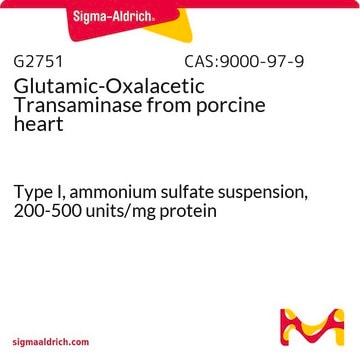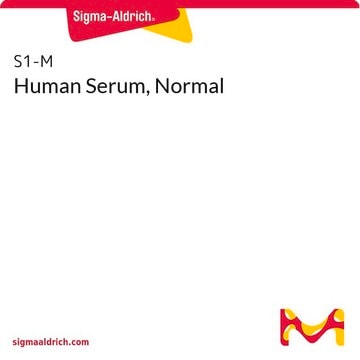A3809
Asparaginase from Escherichia coli
lyophilized powder, 100-300 units/mg protein (biuret)
Synonym(s):
L-Asparagine Amidohydrolase
Sign Into View Organizational & Contract Pricing
All Photos(2)
About This Item
Recommended Products
form
lyophilized powder
Quality Level
specific activity
100-300 units/mg protein (biuret)
composition
Protein, ≥60%
storage temp.
2-8°C
Looking for similar products? Visit Product Comparison Guide
General description
Asparaginase is a bacterial enzyme and also a chemotherapeutic drug.
Application
Asparaginase from Escherichia coli has been used:
- to compare the cytotoxic effect of L-asparaginase purified from Streptomyces brollosae NEAE-115
- as a standard in asparaginase assay to quantify asparaginase activities in various eel tissues
- to elicit amino acid deprivation
Biochem/physiol Actions
Asparaginase (ASNase) products are usually obtained from Escherichia coli and Erwinia chrysanthemi. These enzymes can block the synthesis of protein in tumor cells. It shows high activity in the G1 phase of the cell cycle. It is capable of causing pancreatitis in leukemia patients.
Asparaginase is used in enzymatic assays and to convert asparagine to aspartic acid. Asparaginase is used to reduce the formation of acrylamide in starchy food products. It is also used as a chemotherapy agent for acute lymphoblastic leukemia . Product A3809 is from Escherichia coli and is provided as a lyophilized powder containing sodium chloride.
Asparaginase may cause cell death in leukemic cells by converting the necessary L-asparagine to aspartic acid and ammonia . Asparaginase is allosterically regulated and is crucial for proper cell functioning .
Unit Definition
One unit will liberate 1.0 μmole of ammonia from L-asparagine per min at pH 8.6 at 37 °C.
Physical form
Lyophilized powder containing sodium chloride
Preparation Note
Chromatographically purified
Analysis Note
Protein determined by biuret.
Signal Word
Warning
Hazard Statements
Precautionary Statements
Hazard Classifications
Repr. 2 - Skin Sens. 1
Storage Class Code
11 - Combustible Solids
WGK
WGK 3
Flash Point(F)
Not applicable
Flash Point(C)
Not applicable
Personal Protective Equipment
dust mask type N95 (US), Eyeshields, Gloves
Choose from one of the most recent versions:
Certificates of Analysis (COA)
Lot/Batch Number
Don't see the Right Version?
If you require a particular version, you can look up a specific certificate by the Lot or Batch number.
Already Own This Product?
Find documentation for the products that you have recently purchased in the Document Library.
Customers Also Viewed
Changes in plasma angiotensin subtypes in Japanese eel acclimated to various salinities from deionized water to double-strength seawater
Wong MKS, et al.
General and Comparative Endocrinology, 178(2), 250-258 (2012)
L-Asparaginase: discovery and development as a tumor-inhibitory agent.
J D Broome
Cancer treatment reports, 65 Suppl 4, 111-114 (1981-01-01)
Asparagine Synthetase Is Highly Expressed at Baseline in the Pancreas Through Heightened PERK Signaling
Mukherjee A, et al.
Cellular and molecular gastroenterology and hepatology (2019)
Jie Xiong et al.
EBioMedicine, 72, 103614-103614 (2021-10-11)
Metabolic reprogramming plays an essential role on lymphoma progression. Dysregulation of glutamine metabolism is implicated in natural-killer T-cell lymphoma (NKTCL) and tumor cell response to asparaginase-based anti-metabolic treatment. To understand the metabolomic alterations and determine the potential therapeutic target of
Purification, characterization and immunogenicity assessment of glutaminase free L-asparaginase from Streptomyces brollosae NEAE-115
El-Naggar NEA, et al.
BMC Pharmacology & Toxicology, 19(1), 1-15 (2018)
Our team of scientists has experience in all areas of research including Life Science, Material Science, Chemical Synthesis, Chromatography, Analytical and many others.
Contact Technical Service










